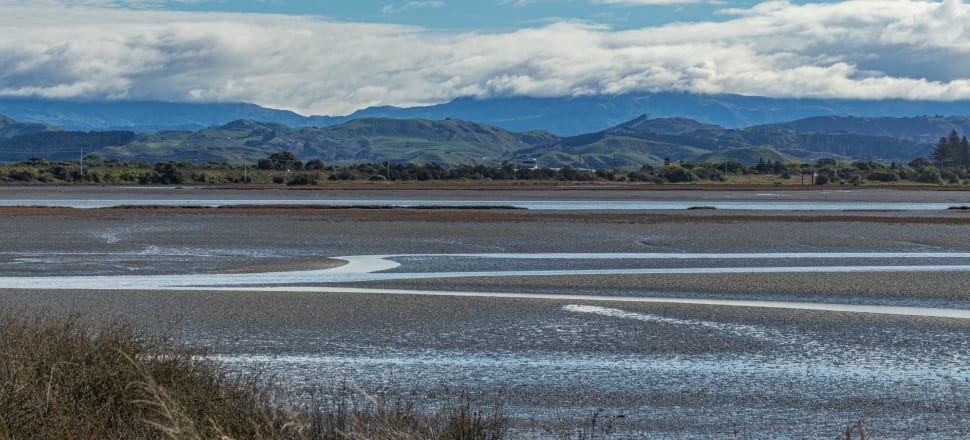
The Environment Minister will soon hear back from officials on the way forward for coastal wetland regulation after new rules were tested in the courts last year
A briefing due back any day now on what can and can’t be done in and around coastal wetlands will be the latest step in a raft of tweaks and changes the Government has made since implementing the Essential Freshwater package in 2020.
A particular focus of the package, which included the National Policy Statement for Freshwater Management and National Environmental Standards for Freshwater, was protecting and restoring natural wetlands.
The regulations came down hard on development in and around the ecological feature, but slowly the controls are being reduced as unintended consequences of the rules are raised by industry and lobby groups.
The latest review was born out of a High Court ruling in late 2021 which found the same rules for inland wetlands – think swamps or permanently wet areas – applied to coastal wetlands like mangrove forests, salt marshes and estuaries.
The Ministry for the Environment had always intended this be the case but the unworkability for councils around what exactly a coastal wetland is – and the practicality that the definition picked up more of the Coastal Marine Area than intended - has been problematic.
RMA lawyer Mike Doesburg said the ministry's preferred option, which was to remove coastal wetlands from the regulations leaving it to regional councils under their coastal plans to govern, appeared to strike the right balance.
“Different parts of New Zealand have different kinds of coastal issues. Northland, Auckland, the Waikato and Bay of Plenty are the only councils in New Zealand that have mangrove forests, but councils down in the South Island don't.
“And so letting different regions plan for regional differences makes a lot more sense than taking a broad-brush approach.”
The other options were to leave the regulations as they are, or come up with a whole new definition for a coastal wetland, being clear about to where it applies, and working that into the rules.
This is the place that's going to be impacted the most by storm surges and sea level rise... But we're not really recognising that." – Tom Kay, Forest & Bird
Forest & Bird prefers the latter.
Freshwater advocate Tom Kay said regional councils couldn't be trusted to keep coastal wetlands safe from degradation.
“The problem is, a whole bunch of councils don't have coastal plans that give effect to that policy statement. So there's no guarantee that there's protection in place for coastal wetlands, if you suddenly just went now.
“So our preference is that you would tweak existing rules to be clear about where they're applying when they're done, which would be reasonably easy.”
Kay said protecting coastal wetlands should be of utmost importance.
“This is the place that's going to be impacted the most by storm surges and sea level rise, it's the place that we're going to have to retreat from first probably, and we actually need to make space for these ecosystems to retreat to as well so they continue to exist, but also so they continue to kind of be that buffer between us and the impacts of nature.
“But we're not really recognising that and we continue to just build stuff in coastal environments.”
Doesburg agreed protecting coastal wetlands was at the heart of the regulations, however said it would have been better if the government did not have to continually wind back rules that had come in too hard and too fast.
"Rushing it out and then continuing to tinker is perhaps not the best way to develop national environmental regulation that people can have faith and trust in. While some participants in the industry might be pleased with where it is heading, others will be unhappy about it and may call for more changes.
"I think people would have preferred that more time was taken at the outset and it was right the first time.”
The tinkering comes as scientists, companies and non-governmental organisations look to coastal wetlands as a potential blue carbon credit source.
One of these NGOs is US-based The Nature Conservancy, which has been scoping such a project for New Zealand for more than a year.
Its acting director of conservation, Erik van Eyndhoven, said the potential was promising.
“There are some challenges, of course, dealing with New Zealand specific conditions and one of the big issues that we have is understanding the potential sequestration rates that we can achieve here, given that there's not a lot of data on that for New Zealand systems.
“Just last week, we went out and visited a number of potential sites around the Kaipara Harbour and the Bay of Plenty. And so we're just in the process really of selecting that initial tranche of sites that will go forward for detailed site investigations."
He said if landowners could claim carbon credits for their coastal wetland it would incentivise re-wetting and the removal of farming activities on the land.
“So what we intend on doing is the emissions monitoring, hydrological modelling, in other words, to really understand what the opportunity is for carbon capture at those sites, what the potential yield might be and what the impact would be on farmers for shifting their current land uses back into establishing salt marsh and mangrove forest.
“At that point, the data is only to make a decision as to whether or not they go ahead. But we really have to collect that information to go forth, and we can make those decisions.”
He said “hundreds of thousands of hectares” could be available.
“The size of the prize is unclear to people at the moment, just how big a deal could this be in terms of our overall contributions to emissions reductions or carbon capture. We hope to have an answer in the future on that one.”
van Eyndhoven said markets had been set up by The Nature Conservancy overseas, one example being the restoration of seagrass on the coast of Virginia in the US.
“We're focusing around creating new areas, or restoring back places that were previously lost, let's say decades ago.”
He said all going to plan a blue carbon credit market could be ready to go in New Zealand by 2024.
By then, the regulations governing the features will hopefully be figured out.







